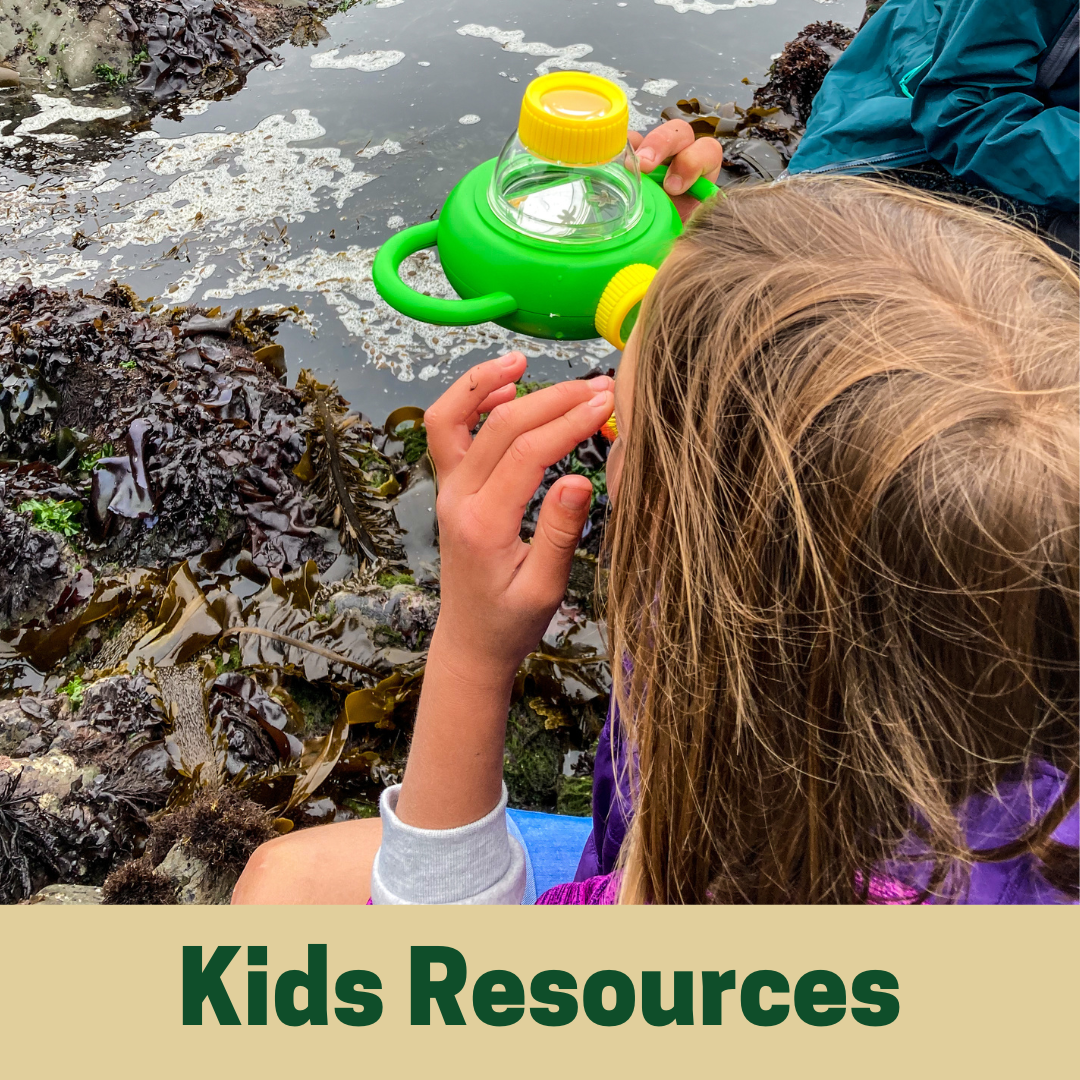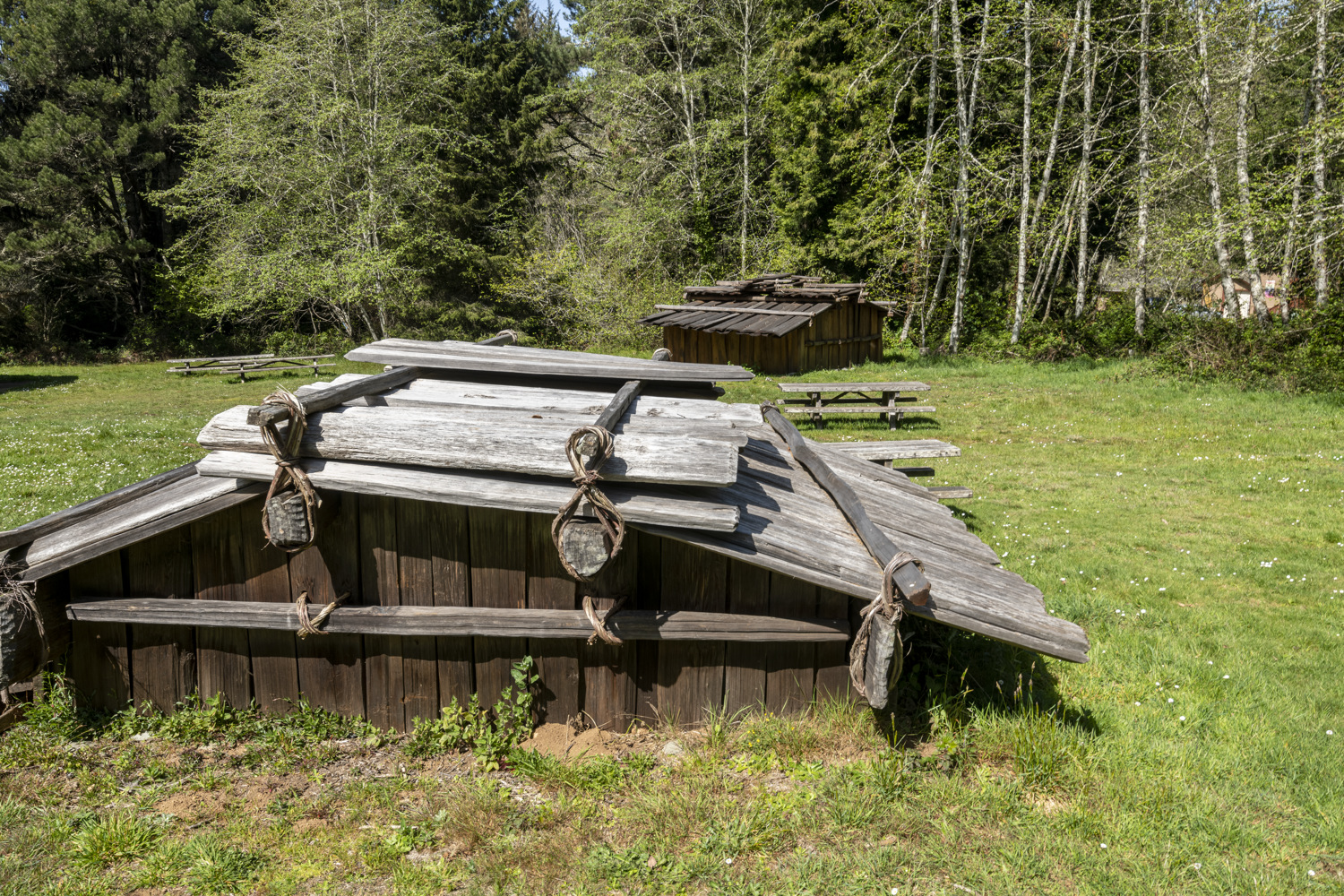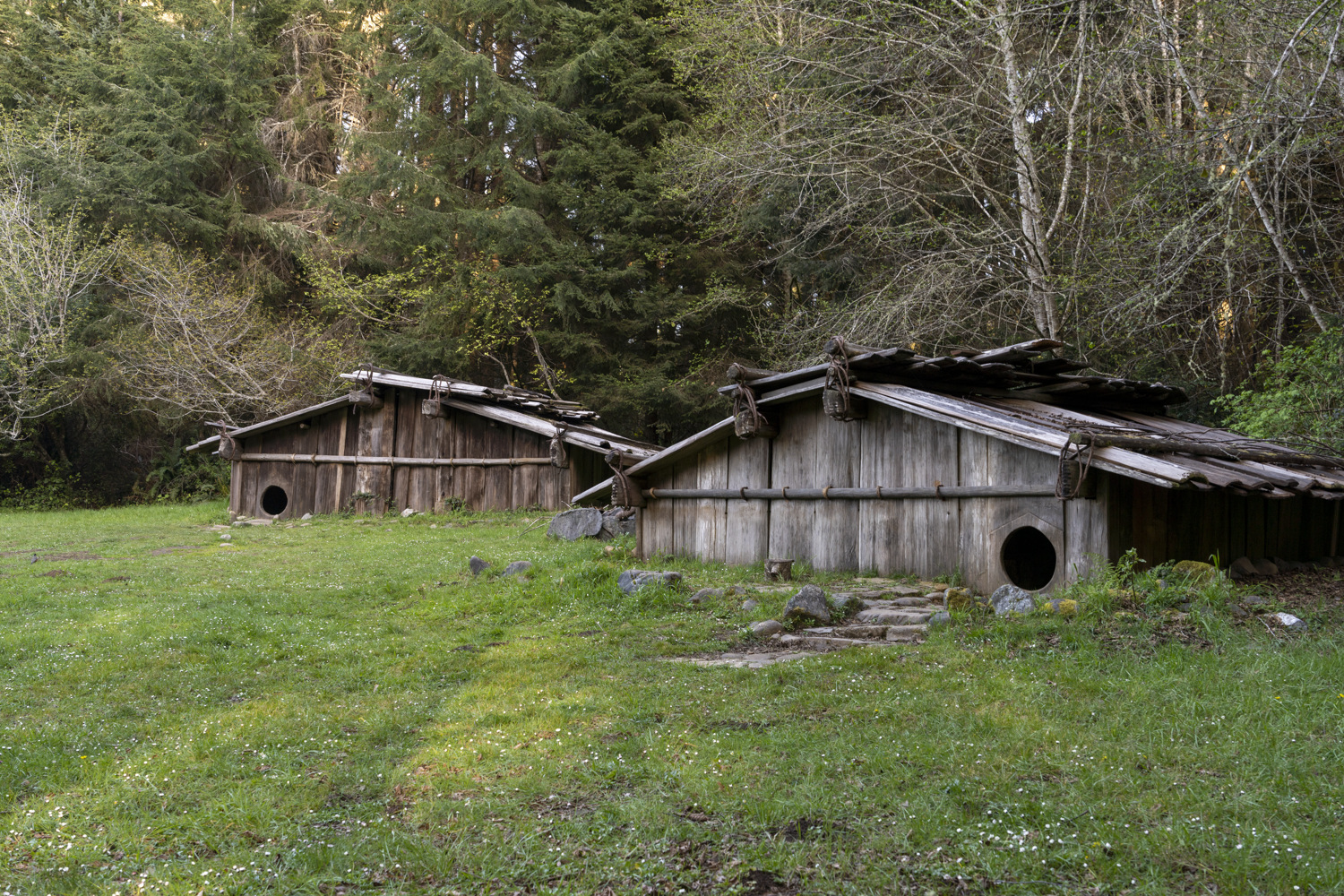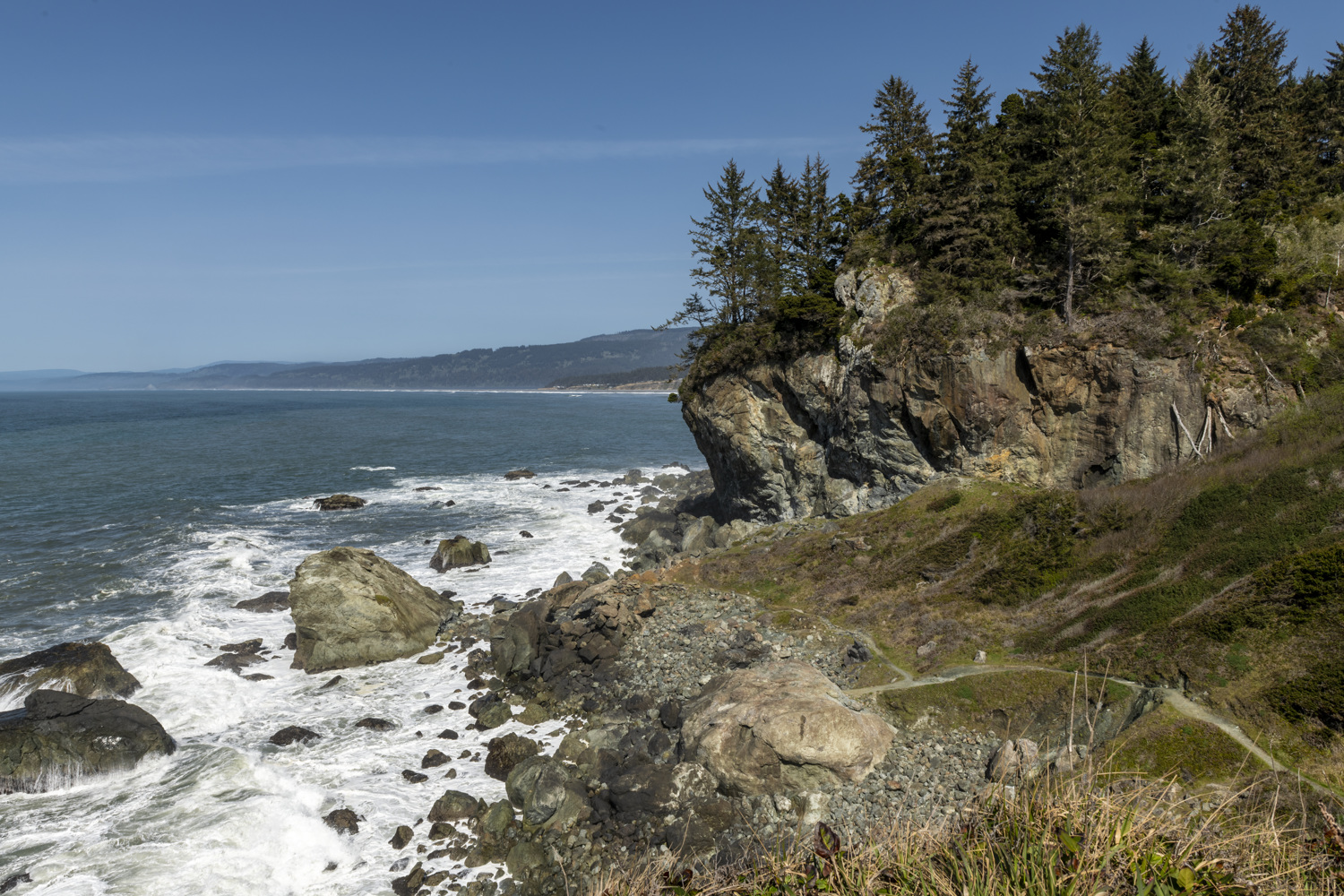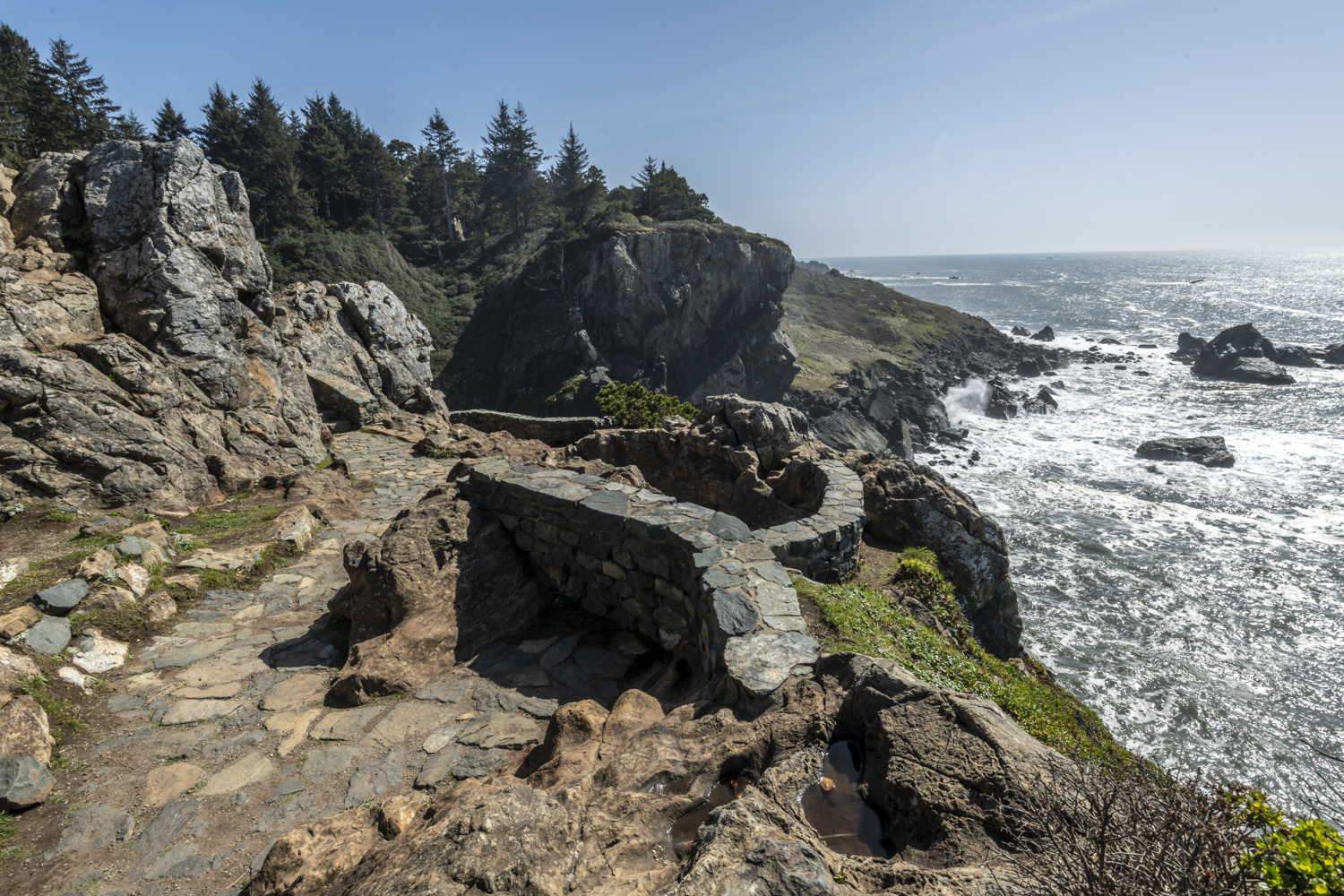Welcome to Sue-meg State Park
To keep up to date on events happening in north coast parks, visit the North Coast Redwoods Facebook and Instagram pages.
Thirty miles north of Eureka, Sue-meg State Park sits on a lushly forested promontory beside the Pacific Ocean.The one-square-mile park is densely packed with potential adventures. On a short walk around the perimeter of the park, you can hunt for agates, explore tidepools, and walk through a jungle of shrubs and trees as you peer out at seals, sea lions, and migrating whales. In the park’s interior, you’ll find a visitor center, a native plant garden, and a reconstructed Yurok plank-house village. You can picnic or wake up to birdsong at one of three campgrounds. In summer, you can witness a traditional ceremony at Sumêg Village or take a hike led by a docent or professional naturalist. You don’t have to go far to find something fascinating at Sue-meg.
Fourth graders and their families can visit this park for FREE using the California State Parks Adventure Pass. Learn more here!
Weather
40–65°F. in summer, 35–55° in winter. Night and morning fog lurks almost all year. Sometimes it doesn't lift for days at a time in summer. Beautiful, clear days are more common in spring and fall. Rainfall averages about 60 inches a year, most of it between October and April.
District Contact Information
NoCoastRedwoodsInfo@parks.ca.gov
District Office: (707) 445-6547
District Fax: (707) 441-5737
3431 Fort Ave.
Eureka, CA 95503
Open Hours: Monday - Friday 8AM - 4PM




